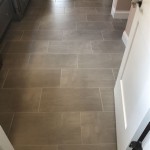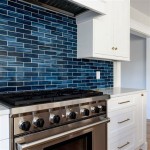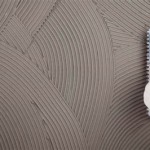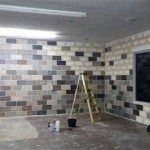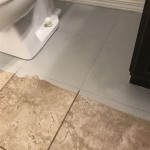Do You Need Backer Board For Tile On Concrete?
The decision to use backer board when tiling over concrete is a crucial one that significantly impacts the long-term success of the tile installation. While concrete provides a seemingly durable and solid substrate, it possesses characteristics that may necessitate the use of an intermediary layer like backer board. Factors such as moisture content, surface irregularities, and potential movement within the concrete slab all play a role in determining the appropriateness of backer board for a specific tiling project.
Directly adhering tile to concrete, without proper preparation or the use of a backer board, increases the risk of tile cracking, debonding, and moisture-related issues. Understanding the pros and cons of both approaches, and evaluating the specific conditions of the concrete substrate, is essential for making an informed decision. This article will explore the considerations involved in determining whether backer board is necessary when tiling over concrete, providing insights into the benefits and drawbacks of each option.
Understanding Concrete Substrates
Concrete is a composite material known for its compressive strength and durability. However, its properties can vary significantly depending on its composition, age, curing process, and environmental exposure. Before tiling, it is vital to assess the concrete substrate to identify potential issues that could compromise the tile installation. Key considerations include:
Moisture Content: Concrete is porous and can absorb moisture from the surrounding environment, including the ground beneath it. Excessive moisture within the concrete can migrate through the tile installation, leading to adhesive failure, mold growth, and tile cracking. Testing the moisture content of the concrete is critical. A moisture meter can provide a reading of the moisture level, and guidelines from tile and adhesive manufacturers often specify acceptable moisture content thresholds.
Surface Condition: The surface of the concrete must be clean, level, and free from contaminants that could interfere with the bond between the tile adhesive and the concrete. This includes removing dust, debris, grease, paint, and any existing coatings. A thorough cleaning, often involving mechanical abrasion or chemical cleaning, is typically necessary. Any significant surface imperfections, such as cracks or unevenness, must be addressed before tiling.
Movement and Cracking: Concrete is susceptible to cracking due to thermal expansion and contraction, settling, and other structural factors. Existing cracks, even hairline cracks, can propagate through the tile installation, leading to tile cracking and failure. Furthermore, ongoing movement within the concrete slab can stress the tile and adhesive, weakening the bond over time. Expansion joints should be incorporated into the tile layout to accommodate movement and prevent stress buildup.
Curing and Age: Newly poured concrete requires sufficient time to cure and reach its full strength. Premature tiling over uncured concrete can lead to problems as the concrete continues to shrink and harden. Furthermore, older concrete may have undergone significant changes in its moisture content and surface condition over time, necessitating more extensive preparation before tiling.
Benefits of Using Backer Board Over Concrete
Backer board, typically made of cement or fiber cement, serves as an intermediary layer between the concrete substrate and the tile. It offers several advantages that can improve the long-term performance of the tile installation:
Moisture Resistance: Backer board is designed to be highly resistant to moisture, providing a stable and waterproof surface for tiling. It prevents moisture migration from the concrete to the tile, reducing the risk of adhesive failure and mold growth. This is particularly important in areas with high moisture exposure, such as bathrooms and kitchens.
Surface Stability: Backer board provides a uniform and dimensionally stable surface for tiling, even if the concrete substrate is uneven or has minor imperfections. It helps to distribute stress evenly across the tile installation, reducing the risk of cracking due to localized stress points. The rigidity of the backer board also contributes to the overall stability of the tile assembly.
Improved Adhesion: Backer board provides an excellent bonding surface for tile adhesive, ensuring a strong and durable bond between the tile and the substrate. The textured surface of backer board provides a mechanical key for the adhesive, enhancing its grip. This is especially important for larger format tiles or tiles with textured surfaces.
Crack Isolation: Some types of backer board are designed with crack isolation membranes embedded within them. These membranes can help to prevent cracks in the concrete substrate from propagating through the tile installation. This is particularly beneficial in areas where the concrete is prone to cracking or movement.
Leveling and Adjustment: Backer board can be used to create a level surface for tiling, even if the concrete substrate is slightly uneven. Shims can be placed beneath the backer board to adjust its height and ensure a perfectly level surface. This simplifies the tiling process and ensures a professional-looking result.
Easier Installation: While adding an extra step, backer board can, in some cases, simplify the overall tiling process. It provides a consistent, predictable surface to work with, reducing the need for extensive concrete surface preparation. It is generally easier to cut and install backer board than to grind down uneven concrete.
When Direct Adhesion to Concrete Might Be Suitable
While backer board offers significant advantages, direct adhesion of tile to concrete can be a viable option in certain circumstances. This approach requires careful assessment and preparation of the concrete substrate. Key factors that favor direct adhesion include:
Dry Concrete: The concrete must be demonstrably dry, with moisture content within the limits specified by the tile adhesive manufacturer. A moisture test is essential to confirm dryness. If moisture is a concern, it is always recommended to use backer board with a moisture barrier.
Sound and Stable Concrete: The concrete substrate must be structurally sound and free from cracks, significant surface imperfections, or movement. Any existing cracks should be repaired and stabilized before tiling. Substantial movement indicates the need for backer board with crack isolation properties.
Clean and Prepared Surface: The concrete surface must be thoroughly cleaned and prepared to remove all contaminants and ensure proper adhesion. This typically involves mechanical abrasion, chemical cleaning, or a combination of both. A bonding agent might be required to further enhance adhesion.
Proper Adhesive Selection: The correct type of tile adhesive must be chosen based on the type of tile, the concrete substrate, and the environmental conditions. The adhesive must be compatible with both the tile and the concrete and should be specifically designed for direct adhesion to concrete. Modified thin-set mortars are often used.
Experienced Installation: Direct adhesion to concrete requires greater skill and experience. Installers must be knowledgeable about concrete preparation techniques, adhesive selection, and proper installation procedures. Proper trowel techniques are critical for ensuring full adhesive coverage and a strong bond.
Small Tile Format: Smaller tile formats, such as mosaics or smaller ceramic tiles, generally have a greater tolerance for minor substrate imperfections and movement. Larger format tiles, on the other hand, are more susceptible to cracking if the substrate is not perfectly flat and stable.
Ultimately, the decision of whether to use backer board or directly adhere tile to concrete depends on a comprehensive assessment of the concrete substrate, the intended use of the tiled area, and the level of risk tolerance. While direct adhesion can be a cost-effective option in certain situations, using backer board provides a greater margin of safety and can significantly improve the long-term performance and durability of the tile installation.
In summary, while tiling directly to concrete is possible under specific, controlled conditions, the benefits of backer board regarding moisture resistance, surface stability, improved adhesion, crack isolation, leveling capabilities, and easier installation often outweigh the additional cost and labor. A thorough assessment of the concrete's condition and the project's requirements is crucial to determine the most appropriate approach.

Installing Cement Backerboard For Tile Flooring Hometips

Cement Board Installation On Floors 5 Mistakes To Avoid Diytileguy

How To Install Cement Backer Board For Floor Tile Installation The Home Depot

Cement Board What It Is When To Use Home Tips For Women

Durock Cement Board Do S And Dont

How To Install Hardie Backer Cement Board On Floors James Pros

How To Install Cement Board For Tile Projects Diy Family Handyman

Backer Board The Pros And Cons Of Various Tile Backers

Cement Backerboard Floor Tile Installation Uncookie Cutter

Our First Bathroom Tiling Fibre Cement Boards Small Scale Engineering
Related Posts


